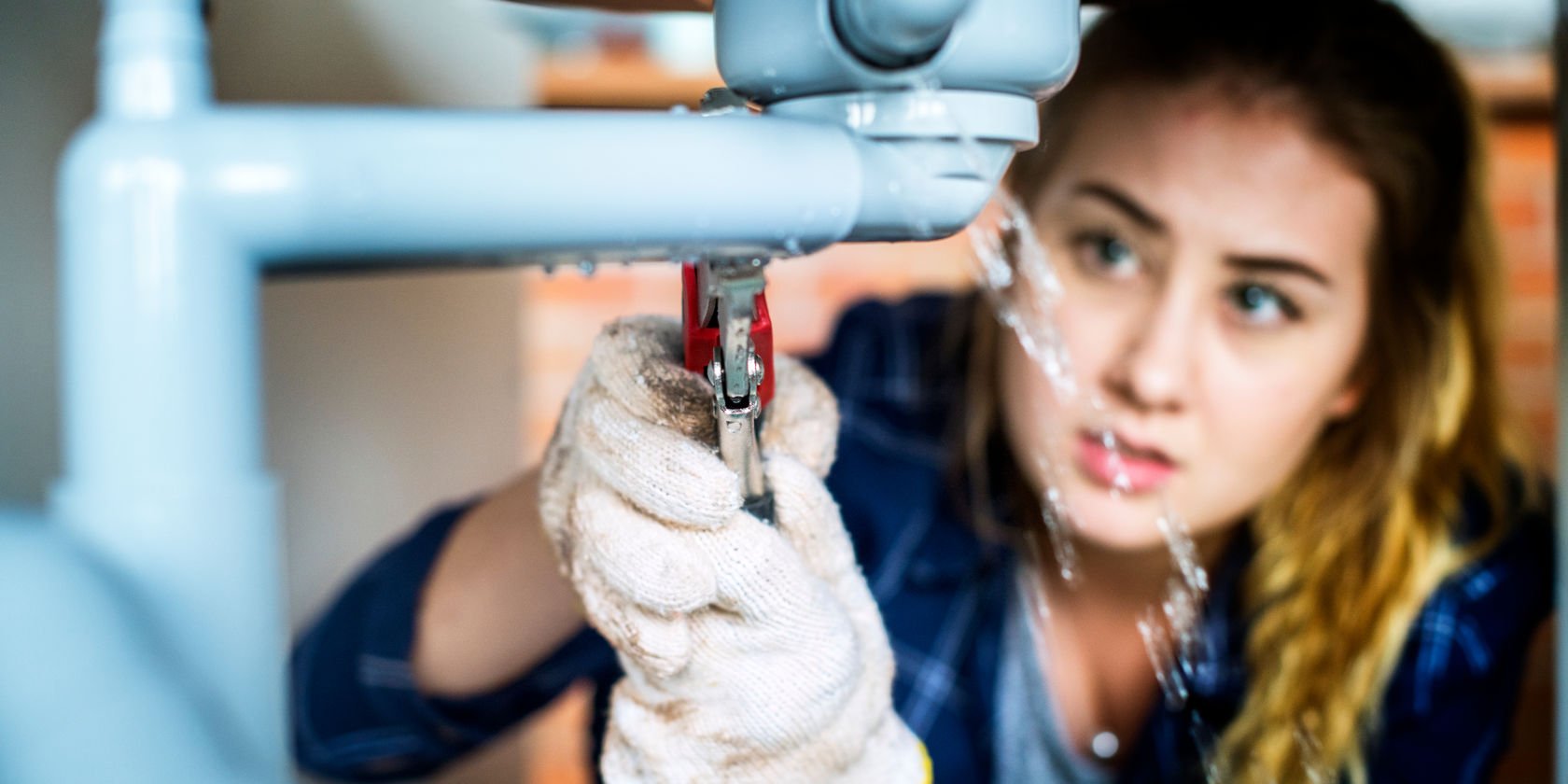Money down the drain
Suncorp warns 24 hours is all it takes for a burst flexi-hose to flood your entire home these school holidays.
Share

Despite lurking under the sink in most Aussie homes, almost half of Australians (47 per cent) don’t know what a flexi-hose is, and 20 per cent don’t know where to find them in their homes… and it’s costing them big time.
Suncorp Insurance wants all Aussies to not only learn what a flexi-hose is and where they can find them in their homes, but take the necessary precautions these school holidays to ensure they don’t become another flexi-hose casualty, and return from holidays to a flooded home and drowned memories.
#What is a flexi-hose?
Flexi-hoses – also known as flexible braided hoses or flexible plumbing hoses – are a common style of plumbing fitting. They are a rubber hose reinforced externally with stainless steel webbing, fitted with clamped stainless-steel fittings on either end. Used to connect water to taps and fixtures, they are especially common in bathrooms and kitchens – where their flexibility, low cost and ease of installation make them a popular choice for plumbers.
If you’ve had some plumbing work done to your home in the past 20 years – it is highly likely you have a flexi-hose (or two) under your sink.
#One in four have experienced water damage, eight in ten don’t know how to prevent it
According to new Suncorp Insurance research a quarter of Aussies (25 per cent) have experienced flooding or water damage in their home, yet the vast majority (over 80 per cent) have no idea how to reduce their likelihood of becoming another flexi-hose statistic.
In 2022, Suncorp Insurance homes claims data revealed that flexi-hoses were responsible for almost one in ten water damage claims in Australian households, and when it came to cost, claims involving flexi-hoses were more than double the cost of damage from a regular burst pipe*.
“Burst flexi-hoses are unfortunately a common issue – but they don’t have to be,” Suncorp Insurance Head of Home Claims Steven Hussey said.
“In most cases, a burst flexi-hose and damage caused by them is completely avoidable. Most flexi-hoses burst due to the breakdown of the external braiding material due to rust and corrosion or the effects of twisting, kinking or stretching – things that can all be monitored and prevented with ongoing care and maintenance.”
Licensed plumber Rebecca Senyard, also known by her popular blog ‘The Plumbette’ revealed that ideally, Aussies should be looking under their sinks to check on the condition of their flexi-hoses every six months.
“Due to the fact that flexi-hoses are generally in those high-usage areas of our homes – kitchens, laundries, bathrooms and even inside your toilet – Aussies should really be checking on their flexi-hoses to ensure they are in optimum working order,” she said.
“Some flexi-hoses can work without an issue for 20 years – while others corrode, rust and fail faster – it really is a matter of staying on top of your home maintenance and keeping an eye on them, and getting them checked and/or replaced by a licensed plumber as soon as you notice something isn’t right.”
Over one in ten Australians (13 per cent) believe flexi-hoses never need to be replaced, unless they burst, and a further 35 per cent are unsure – when in fact it is generally recommended in the industry to change them every three to five years.
#24 hours is all it takes
Forty per cent of Australians do not realise that it can take as little as 24 hours for an entire house to be flooded and significant water damage to occur as a result of a burst flexi-hose – if left unattended.
“A burst flexi-hose left undiscovered for 24 hours can release enough water to fill a household swimming pool – approximately 61,000 litres,” Miss Senyard said.
“The damage that can cause internally – to your home, its structure and your contents – is incredible…and not in a good way.”
Steven Hussey, Suncorp Insurance Head of Home Claims
Aussies are dancing with disaster if they have a deteriorated flexi-hose in their home and they aren’t turning off the water when leaving for an extended break.
#Turn off your mains to turn on your protection
With the Easter long weekend and school holidays upon us, and many Aussies taking the opportunity for an extended break – Suncorp Insurance is urging Aussies to locate the flexi-hoses within their home, check on their condition, and most importantly turn the water off at the mains before heading away.
Research reveals that a significant number – seven out of ten Aussies – do not check or ensure their water is turned off at the mains before leaving when going away on holidays, leaving them exposed.
Home claims insights from 2022 show flexi-hose related claims costs spiked by 26 per cent during March and April – over the Easter holiday period**.
“Aussies are dancing with disaster if they have a deteriorated flexi-hose in their home and they aren’t turning off the water when leaving for an extended break,” Mr Hussey said.
“If a burst flexi-hose can release upwards of 61,000 litres in the space of 24 hours… imagine what it could do if left unnoticed and unattended for longer.”
#Not maintained? Not covered.
While most Aussies purchase insurance to protect themselves and their belongings in the event of an accident at home, many aren’t aware that ‘wear and tear’ is not covered.
Half of Australians (50 per cent) incorrectly believe that if their home was flooded or damaged by water as a result of a burst flexi-hose, if the hose wasn’t properly maintained – and showed signs of wear, tear, rust and/or corrosion, that their insurer would still cover the cost of all repairs and replacements.
“Most insurers will not cover damage caused by burst flexi-hoses that have not been maintained,” Mr Hussey said.
“That is why it is so important to ensure you do regular maintenance checks on your flexi-hoses – and contact a licensed plumber if you notice something is not right.
“All it takes is 10 minutes every six months – pop your head under the sink and check to see if you can spot any fraying, rust, corrosion, kinking or twisting with your flexi-hoses – and if you do, call a licensed plumber immediately… it could not only save you a lot of hassle and heartache, but money too.”
* Suncorp Group claims data from 1 January 2022 – 31 December 2022 analysed more than 23,000 home claims involving water damage.
** Suncorp Group claims data over the past five years to 31 December 2022 analysed more than 141,000 home claims involving water damage.
#Top tips for flexi-hose maintenance
Suncorp and Ms Senyard said it is easy to keep on top of flexi-hose maintenance and reduce the likelihood of your home being flooded or damaged by water as a result of a burst flexi-hose.
Their top tips include:
Check the condition of your flexi-hose every six months. If there are any signs of deterioration present in the hose, it should be checked and replaced by a licensed plumber asap.
Turn off water mains properly and appliances at the water stop before heading off on vacation.
Any household chemicals that are stored under the sink near flexi-hoses should be kept sealed and in their original containers
Suncorp highly recommends that flexi hose replacement is completed by a licensed plumber.
The fitment of individual ‘stop cocks’ to all flexi-hoses is recommended.
Flexi-hoses should never be fitted in a way that twisting, kinking or stretching of the hose is present.
Flexi-hoses should not be loose or over tightened at connection points to ensure hose longevity (use of licensed Plumber recommended for fitment).
Consider an alternate flexi hose material other than stainless steel.
What to look for when checking the condition of your flexi-hose:
Connections should be leak free.
Bulging areas on the pipes (they will look like little black balloons).
Any twists, kinks, sharp bends or stretching of the hose.
Discolouration to the hose surface (dark appearance, black, brown or reddish spotting).
Broken fibres visible.
Calcification (green or white staining) evident on the hose connections or along the length of the hose.
Ensure that the hoses are firmly connected, and the connections are also checked during routine inspections.
VNRs




